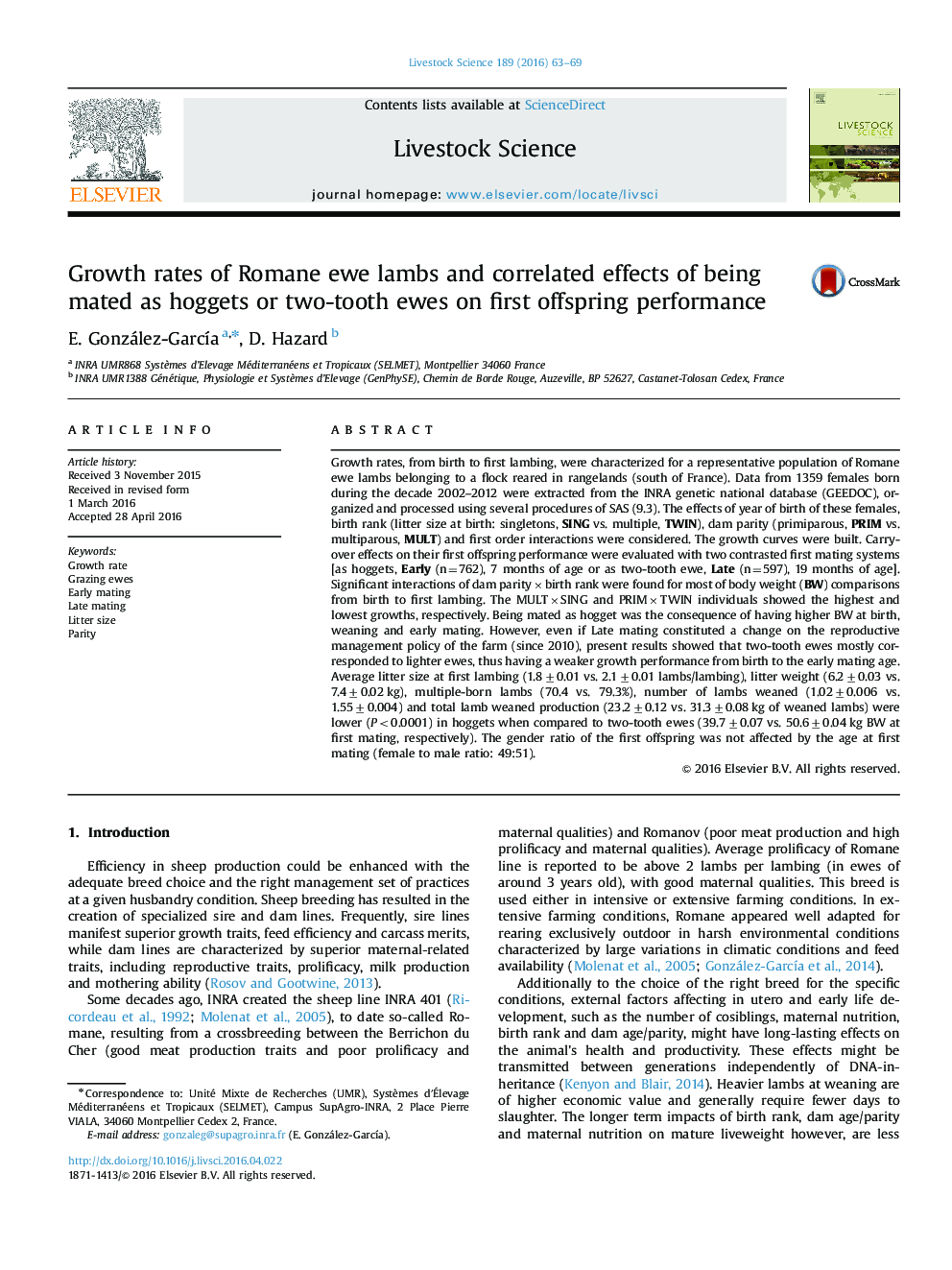| کد مقاله | کد نشریه | سال انتشار | مقاله انگلیسی | نسخه تمام متن |
|---|---|---|---|---|
| 2446909 | 1553943 | 2016 | 7 صفحه PDF | دانلود رایگان |

• First mating age decisions in ewe lambs are based on their first year growth rate.
• Early mating (7 months of age) reduce litter size and growth of the first offspring.
• Parity and birth rank affect growth rates of ewe lambs until their first lambing.
• Ewe growth rate and first-mating age have remnant effects on their first offspring.
Growth rates, from birth to first lambing, were characterized for a representative population of Romane ewe lambs belonging to a flock reared in rangelands (south of France). Data from 1359 females born during the decade 2002–2012 were extracted from the INRA genetic national database (GEEDOC), organized and processed using several procedures of SAS (9.3). The effects of year of birth of these females, birth rank (litter size at birth: singletons, SING vs. multiple, TWIN), dam parity (primiparous, PRIM vs. multiparous, MULT) and first order interactions were considered. The growth curves were built. Carry-over effects on their first offspring performance were evaluated with two contrasted first mating systems [as hoggets, Early (n=762), 7 months of age or as two-tooth ewe, Late (n=597), 19 months of age]. Significant interactions of dam parity×birth rank were found for most of body weight (BW) comparisons from birth to first lambing. The MULT×SING and PRIM×TWIN individuals showed the highest and lowest growths, respectively. Being mated as hogget was the consequence of having higher BW at birth, weaning and early mating. However, even if Late mating constituted a change on the reproductive management policy of the farm (since 2010), present results showed that two-tooth ewes mostly corresponded to lighter ewes, thus having a weaker growth performance from birth to the early mating age. Average litter size at first lambing (1.8±0.01 vs. 2.1±0.01 lambs/lambing), litter weight (6.2±0.03 vs. 7.4±0.02 kg), multiple-born lambs (70.4 vs. 79.3%), number of lambs weaned (1.02±0.006 vs. 1.55±0.004) and total lamb weaned production (23.2±0.12 vs. 31.3±0.08 kg of weaned lambs) were lower (P<0.0001) in hoggets when compared to two-tooth ewes (39.7±0.07 vs. 50.6±0.04 kg BW at first mating, respectively). The gender ratio of the first offspring was not affected by the age at first mating (female to male ratio: 49:51).
Journal: Livestock Science - Volume 189, July 2016, Pages 63–69